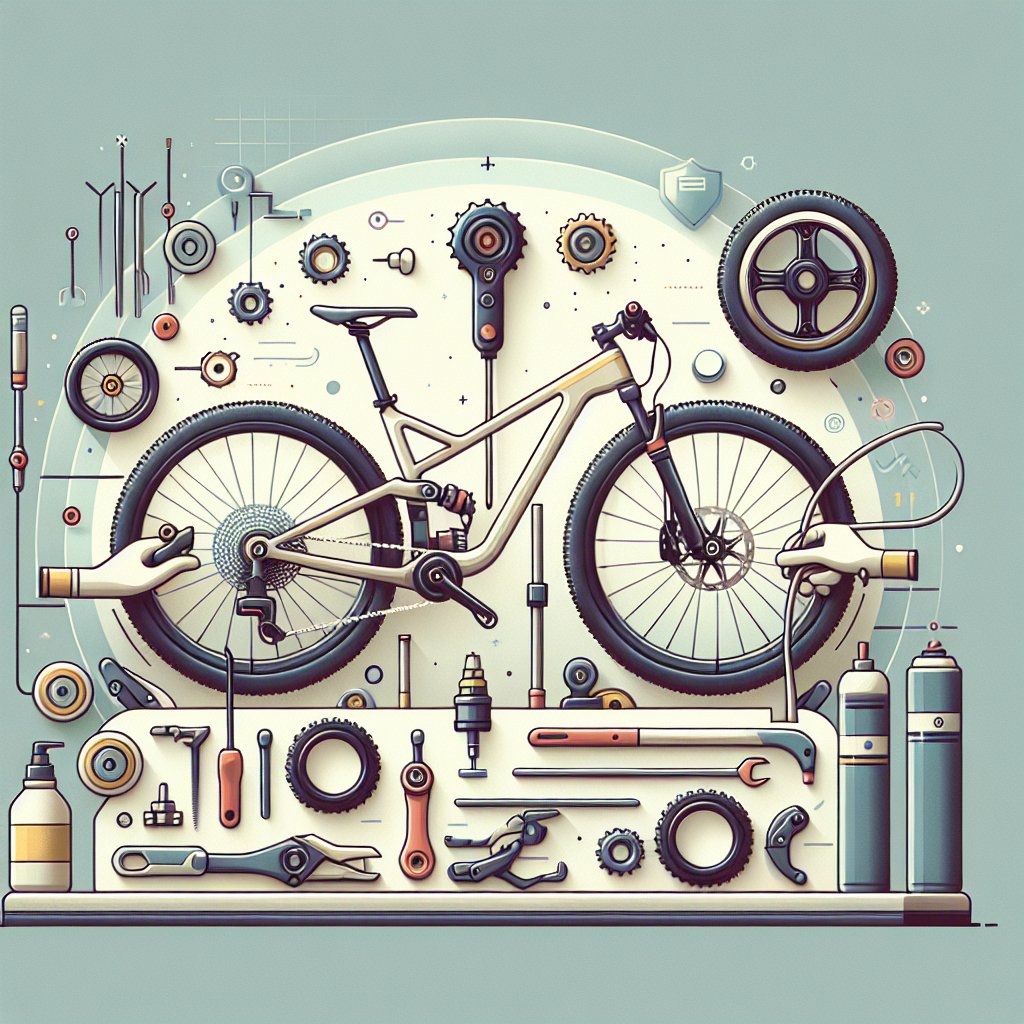Mountain biking is an exhilarating sport that combines the thrill of adventure with the beauty of nature. However, to ensure a safe and enjoyable ride, it’s crucial to keep your mountain bike in top condition. This article will provide essential maintenance tips to help you maintain your mountain bike and extend its lifespan.
Regular Cleaning and Inspection
One of the most fundamental aspects of mountain bike maintenance is regular cleaning and inspection. Dirt, mud, and debris can accumulate on your bike, leading to wear and tear over time. Here’s how to keep your bike clean and in good shape:
Cleaning Your Bike
- Rinse Off Dirt: Use a gentle stream of water to rinse off loose dirt and mud. Avoid using high-pressure water, as it can damage sensitive components.
- Use a Bike-Specific Cleaner: Apply a bike-specific cleaner to remove stubborn grime. Avoid using household detergents, as they can strip away lubricants and damage the bike’s finish.
- Scrub Gently: Use a soft brush or sponge to scrub the frame, wheels, and components. Pay special attention to the drivetrain, as it tends to accumulate the most dirt.
- Rinse and Dry: Rinse off the cleaner thoroughly and dry the bike with a clean cloth. Make sure to dry hard-to-reach areas to prevent rust.
Inspecting Your Bike
- Check for Damage: Inspect the frame, fork, and components for any signs of damage or wear. Look for cracks, dents, or bent parts that may need repair or replacement.
- Examine the Drivetrain: Check the chain, cassette, and chainrings for wear. A worn drivetrain can lead to poor shifting and reduced efficiency.
- Inspect the Brakes: Ensure that the brake pads have sufficient material and that the rotors are not warped. Properly functioning brakes are essential for safety.
- Check Tire Condition: Look for cuts, punctures, or excessive wear on the tires. Replace them if necessary to maintain optimal traction and performance.
Lubrication and Adjustment
Proper lubrication and adjustment of your mountain bike’s components are essential for smooth operation and longevity. Here’s how to keep your bike running smoothly:
Lubricating the Drivetrain
- Clean the Chain: Before applying lubricant, clean the chain thoroughly to remove dirt and old lubricant. Use a chain cleaner or a rag soaked in degreaser.
- Apply Lubricant: Apply a bike-specific chain lubricant to each link of the chain. Avoid over-lubricating, as excess lubricant can attract dirt.
- Wipe Off Excess: After applying lubricant, wipe off any excess with a clean cloth. This helps prevent dirt buildup and keeps the drivetrain running smoothly.
Adjusting the Gears
- Check Cable Tension: Ensure that the gear cables are properly tensioned. Loose cables can lead to poor shifting performance.
- Adjust the Derailleurs: Use the barrel adjusters to fine-tune the front and rear derailleurs. Proper adjustment ensures smooth and accurate shifting.
- Inspect the Shifters: Make sure the shifters are functioning correctly and that there is no excessive play in the levers.
Maintaining the Brakes
- Check Brake Pads: Inspect the brake pads for wear and replace them if they are worn down. Properly functioning brake pads are crucial for effective stopping power.
- Adjust Brake Calipers: Ensure that the brake calipers are aligned correctly and that the pads make even contact with the rotors.
- Bleed Hydraulic Brakes: If you have hydraulic brakes, periodically bleed them to remove air bubbles and maintain optimal braking performance.
Suspension Maintenance
The suspension system is a critical component of a mountain bike, providing comfort and control on rough terrain. Regular maintenance of the suspension system is essential for optimal performance:
Inspecting the Suspension
- Check for Leaks: Inspect the suspension fork and rear shock for any signs of oil leaks. Leaking seals can lead to reduced performance and damage to the internals.
- Inspect Stanchions and Seals: Check the stanchions (the upper part of the fork) for scratches or damage. Ensure that the seals are clean and free of dirt.
- Test the Suspension: Compress the suspension to ensure it moves smoothly and returns to its original position without any sticking or unusual noises.
Maintaining the Suspension
- Clean and Lubricate: Regularly clean the stanchions and apply a light coat of suspension-specific lubricant to keep them moving smoothly.
- Service Intervals: Follow the manufacturer’s recommended service intervals for your suspension components. This may include oil changes, seal replacements, and internal inspections.
- Adjust Settings: Periodically check and adjust the suspension settings, such as air pressure, rebound, and compression, to match your riding style and terrain.
Wheel and Tire Maintenance
Wheels and tires are the contact points between your bike and the trail, making their maintenance crucial for performance and safety:
Inspecting and Maintaining Wheels
- Check Spoke Tension: Inspect the spokes for proper tension and ensure that none are loose or broken. Properly tensioned spokes help maintain wheel strength and trueness.
- True the Wheels: If your wheels are out of true (wobbly), use a spoke wrench to adjust the spoke tension and bring the wheel back into alignment.
- Inspect Hubs and Bearings: Check the hubs and bearings for smooth rotation and any signs of play. Lubricate or replace bearings as needed.
Maintaining Tires
- Check Tire Pressure: Regularly check and maintain the recommended tire pressure for your riding conditions. Proper tire pressure ensures optimal traction and reduces the risk of flats.
- Inspect for Damage: Look for cuts, punctures, or excessive wear on the tires. Replace damaged tires to maintain safety and performance.
- Sealant Maintenance: If you use tubeless tires, periodically check and replenish the sealant to ensure it can effectively seal punctures.
Storage and Transportation
Proper storage and transportation of your mountain bike can prevent damage and extend its lifespan:
Storing Your Bike
- Clean Before Storage: Always clean your bike before storing it to prevent dirt and moisture from causing corrosion.
- Store in a Dry Place: Keep your bike in a dry, cool place away from direct sunlight. Excessive heat and moisture can damage components and degrade materials.
- Use a Bike Stand: Use a bike stand or hang your bike to prevent pressure on the tires and frame, which can cause deformation over time.
Transporting Your Bike
- Use a Bike Rack: When transporting your bike by car, use a bike rack to secure it properly. Avoid placing the bike inside the car, as it can cause damage to both the bike and the vehicle.
- Protect the Frame: Use padding or a bike cover to protect the frame and components from scratches and impacts during transportation.
- Secure Loose Parts: Remove or secure any loose parts, such as water bottles, lights, or accessories, to prevent them from falling off during transport.
Conclusion
Maintaining your mountain bike is essential for ensuring a safe, enjoyable, and efficient ride. By following these essential maintenance tips, you can keep your bike in top condition and extend its lifespan. Regular cleaning, inspection, lubrication, and adjustment of components, along with proper storage and transportation, will help you get the most out of your mountain biking adventures. Remember, a well-maintained bike not only performs better but also enhances your overall riding experience.



